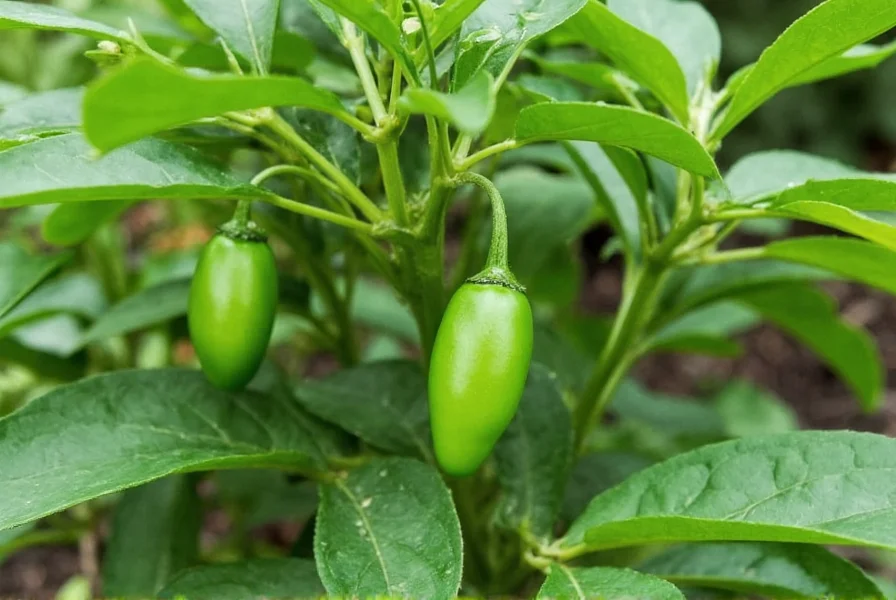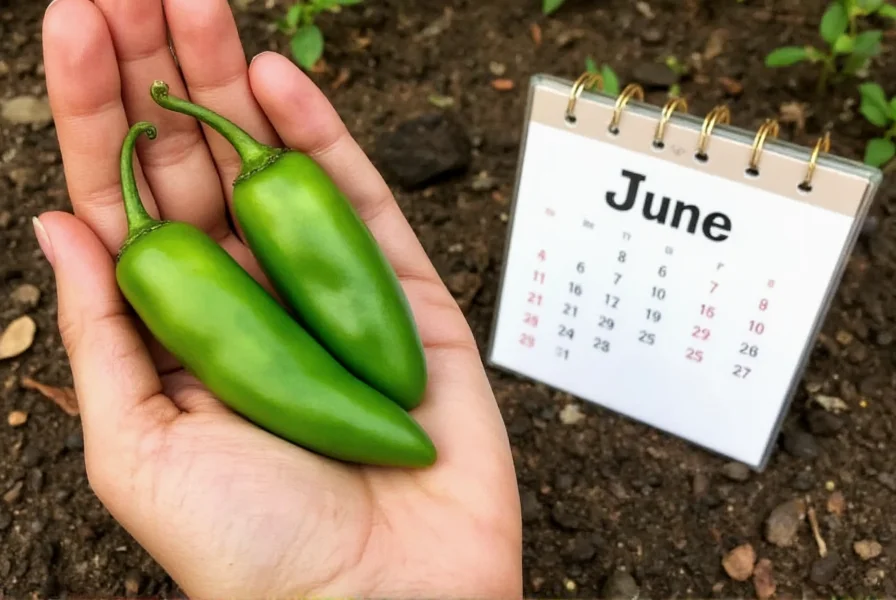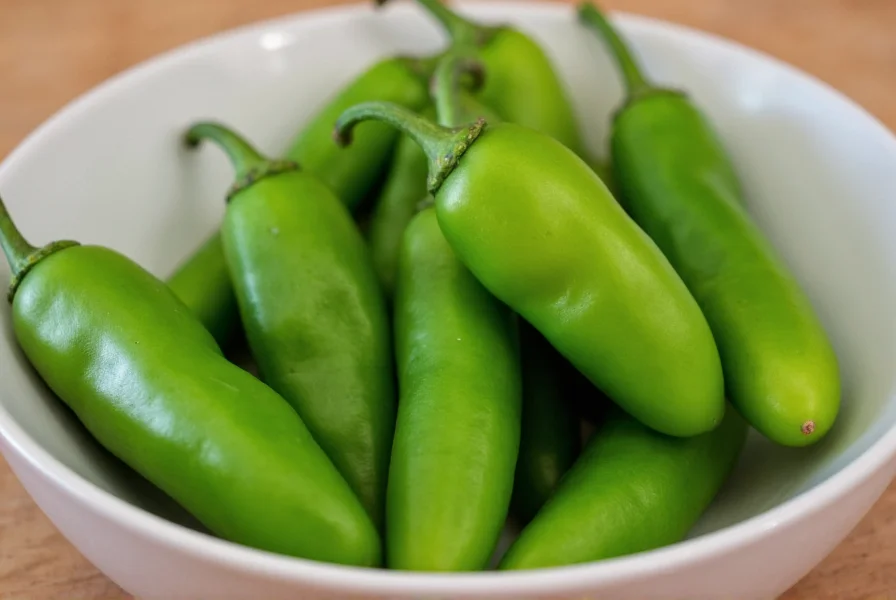For gardeners eager to enjoy fresh jalapenos at the beginning of the season, early jalapeno pepper varieties offer a solution to limited growing windows. These specialized cultivars deliver the familiar jalapeno flavor profile weeks before standard varieties reach maturity, making them valuable for both home gardeners and commercial producers in regions with shorter warm seasons.
Understanding Early Jalapeno Pepper Characteristics
Early jalapeno varieties maintain the essential qualities that make jalapenos popular while significantly reducing time to harvest. These peppers typically range from 2,500 to 8,000 Scoville heat units, placing them firmly in the medium-heat category that most consumers prefer. The key differentiator lies in their accelerated growth cycle without sacrificing the thick-walled, meaty texture that makes jalapenos ideal for stuffing, pickling, and fresh use.
Unlike standard jalapenos that require 70-85 days to mature, early varieties like 'Early Jalapeno' and 'Jalafuego' reach harvest readiness in just 60-70 days. This two-to-three week advantage proves crucial for gardeners in USDA zones 3-5 where the frost-free growing season might only span 120-150 days. The plants themselves often exhibit more compact growth habits, making them suitable for container gardening or smaller spaces.
Popular Early Jalapeno Cultivars Compared
| Variety Name | Days to Maturity | Heat Level (SHU) | Plant Characteristics | Best Growing Regions |
|---|---|---|---|---|
| Early Jalapeno | 60-65 | 4,000-6,000 | Compact, bushy plants (18-24") | Northern climates, containers |
| Jalafuego | 62-68 | 3,500-5,500 | Vigorous, disease-resistant | Midwest, Northeast |
| Granada | 65-70 | 2,500-4,500 | High yield, uniform fruit | Commercial production |
| Mucho Nacho | 68-72 | 5,000-7,000 | Large fruit, excellent flavor | Home gardens, Southern climates |
When selecting early jalapeno pepper seeds, consider your specific climate and intended use. Northern gardeners should prioritize the fastest-maturing varieties like Early Jalapeno, while those in longer-season areas might prefer Mucho Nacho for its larger fruit size. Commercial growers often choose Granada for its uniform maturity and high yields, which facilitate mechanical harvesting.
Optimal Growing Conditions for Early Jalapenos
Though bred for faster maturity, early jalapeno peppers still require proper growing conditions to reach their potential. Start seeds indoors 8-10 weeks before your last expected frost date, using soil blocks or biodegradable pots to minimize root disturbance during transplanting. Maintain soil temperatures between 70-85°F (21-29°C) for optimal germination and early growth.
When transplanting seedlings outdoors, wait until soil temperatures consistently reach at least 60°F (15°C) and nighttime temperatures stay above 50°F (10°C). Space plants 18-24 inches apart in rows 30-36 inches apart to ensure adequate air circulation. Early jalapenos thrive in well-draining soil with a pH between 6.0-6.8, amended with compost or well-rotted manure.
Consistent moisture proves critical for preventing blossom end rot and ensuring proper fruit development. Water deeply 1-2 times weekly rather than frequent shallow watering, aiming for 1-1.5 inches of water per week. Mulching with straw or shredded leaves helps maintain soil moisture and temperature while suppressing weeds.

Harvesting and Culinary Applications
Early jalapeno peppers typically transition from dark green to bright green as they mature, reaching 2-3 inches in length. Harvest when peppers feel firm and have developed their characteristic smooth, slightly tapered shape. Unlike some pepper varieties, jalapenos don't significantly increase in heat as they ripen to red, though their flavor does become slightly sweeter.
The culinary versatility of early jalapenos matches their standard counterparts. Use them fresh in salsas, guacamole, and nachos, or stuff them with cheese for jalapeno poppers. Their thick walls make them excellent for pickling, while their moderate heat level appeals to a broad range of palates. Gardeners harvesting early jalapenos in June or July can enjoy fresh peppers weeks before supermarket jalapenos reach their peak season.
Common Challenges and Solutions
Growing early jalapenos presents some unique challenges compared to standard varieties. The accelerated growth cycle means plants may be more susceptible to temperature fluctuations early in the season. Using row covers during unexpected cold snaps can protect young plants and extend the harvest window.
Blossom drop represents another common issue, often triggered by temperatures below 60°F or above 90°F. Maintaining consistent soil moisture and applying a balanced fertilizer can help mitigate this problem. For gardeners dealing with pepper weevils or aphids, introducing beneficial insects like ladybugs provides effective biological control without resorting to chemical pesticides.

Extending Your Early Jalapeno Harvest
To maximize your early jalapeno yield, implement succession planting techniques. Start a second batch of seeds 2-3 weeks after your initial planting to ensure a continuous harvest. Pinch off the first few flowers to encourage stronger root development before fruiting begins.
For gardeners in extremely short seasons, consider using black plastic mulch to warm the soil before planting or constructing a simple cold frame to protect young plants. These techniques can advance your harvest by another 7-10 days, making the difference between enjoying homegrown jalapenos and waiting for store-bought options.
Frequently Asked Questions
How early can you plant early jalapeno peppers outdoors?
Plant early jalapeno seedlings outdoors after your last expected frost date when soil temperatures consistently reach at least 60°F (15°C) and nighttime temperatures stay above 50°F (10°C). In most regions, this falls between late April and early June. Using row covers can allow planting 1-2 weeks earlier in marginal climates.
Do early jalapeno peppers taste different from regular jalapenos?
Early jalapeno varieties maintain the characteristic jalapeno flavor profile but may have slightly milder heat when harvested at the same maturity stage as standard varieties. The flavor difference is minimal, with most gardeners finding them indistinguishable in culinary applications. Some early varieties like Granada actually develop slightly sweeter notes as they mature.
Can you save seeds from early jalapeno peppers for next year?
Yes, you can save seeds from open-pollinated early jalapeno varieties, but not from hybrids (F1). Allow peppers to fully ripen to red on the plant, then remove and dry the seeds thoroughly before storage. Properly stored seeds remain viable for 2-4 years. Note that cross-pollination with other pepper varieties can occur, potentially altering characteristics in subsequent generations.
Why are my early jalapeno plants not producing fruit?
Lack of fruit production in early jalapenos typically stems from temperature extremes (below 60°F or above 90°F), inconsistent watering, or insufficient pollination. Ensure plants receive at least 6-8 hours of direct sunlight, maintain consistent soil moisture, and consider hand-pollinating flowers with a small brush if bee activity is low. Avoid over-fertilizing with nitrogen, which promotes leaf growth at the expense of fruiting.











 浙公网安备
33010002000092号
浙公网安备
33010002000092号 浙B2-20120091-4
浙B2-20120091-4